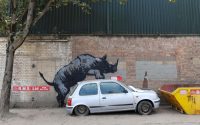‘Extraordinary’ Iron Age Remains Discovered in Northern Ireland Bog
Two-thousand-year-old human remains have been recovered in Northern Ireland’s Bellaghy peatland, which famously figured in writings by the Nobel Prize–winning author Seamus Heaney that described the possibility of hidden archaeological specimens.
Archaeologists were alerted to the bones in Londonderry in October of last year, and they were recovered by the police service of Northern Ireland (PSNI).
The remains are between 2,000 to 2,500 years old and are believed to belong to a teenage boy.
Excavations “first uncovered a tibia and fibula and a humerus, ulna, and radius bone relating to the lower left leg and right arm respectively,” detective inspector Nikki Deehan told BBC. “About five metres south of the surface remains, the bones of a lower left arm and a left femur, were located protruding from the ground. Further examination of the area between the main body and the surface remains located additional finger bones, fingernails, part of the left femur and the breastbone.”
Intact bone and skin make this discovery, the officer added, an “extraordinary find on a global scale.”
The cause of death remains unclear. The head is missing, and experts could not determine if it was removed before or after death.
A cluster of fossil tree remains suggest that the body may have been buried among a stand of trees.
“This is not only significant because it’s Iron Age, but also because of the landscape situation,” explained Alastair Ruffell, a researcher from Queen’s University. “We are in a series of boglands north of Lough Neagh which are very interesting from where they occur because of how the glaciers moved through here and how humans then arrived.”
The bog body was unearthed on land owned by the North Ireland agriculture department, which has been working with national museums to transfer the body for further examination and preservation.



